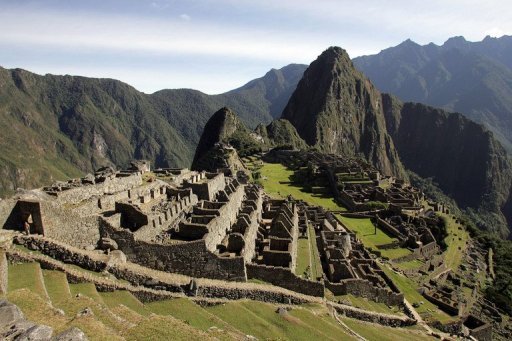
LIMA — Peru used helicopters to airlift foreign tourists trapped by rain and mudslides that killed seven people in and around its famed Machu Picchu ruins, but frustrations grew among the more than 2,500 still stranded.
The operation, which began Monday, by late Tuesday had rescued 125 of the foreigners, most of whom were waiting by a helipad near the ruins themselves, emergency services said.
But another 1,900 were stranded in nearby Aguas Calientes and 670 more on the Inca Trail, a narrow Andean pathway up to Machu Picchu that takes four days to complete and which was cut in several places by landslides.
“People are sleeping in the street square, they are sleeping in gyms, in schools, on trains, in makeshift tents. People are just distressed,” Julie Nemcich, 29, told the Australian Broadcasting Corporation from Aguas Calientes.
A 23-year-old Argentine tourist and a 33-year-old Peruvian mountain guide died on the trail, buried under mudslides, the National Culture Institute in the nearby town of Cusco said.
The other fatalities occurred along the valley leading to Cusco and in the town itself. Two Peruvian men drowned in the valley’s swollen river, another died in a landslide, and a mother and her child were killed in Cusco when heavy rainfall made their home collapse, emergency officials said.
Some 400 Americans were among the stranded near Machu Picchu, State Department spokesman Philip Crowley said in Washington. The US embassy in Peru has sent four helicopters — usually used as part of anti-drug efforts — to help with evacuation efforts, he said.
“We are very grateful for the efforts of the government of Peru in trying to help with the evacuation of American citizens near Machu Picchu,” he said.
In Sydney, Australia’s foreign office said up to 170 Australians were among those stranded. “We are in direct contact with many of those Australians and their tour providers, who we understand are making alternative transport arrangements,” a spokeswoman said.
Tourists forced to wait in the town of Aguas Calientes near the ruins were uncomfortable and frustrated, she said. “But we urge them to exercise patience and await evacuation by the Peruvian authorities,” she said.
Fernando Celis, one of 300 Chileans blocked in Machu Picchu, complained to the online news website Emol that some tourists were bribing rescuers to get them out first.
“A helicopter arrived yesterday to take out the elderly and the unwell and some tourists who had more money. There are almost no North Americans left, only the backpackers, and British backpackers. People on tours who were waving their money about, they were all evacuated,” He said food was running short.
“We haven’t been given anything to eat. Each one is left to work out his rations,” he said, adding that the vendors at the tourist site had immediately doubled their prices when it became clear the foreigners were stuck.
Machu Picchu is one of the most popular destinations for tourists in Latin America, attracting more than 400,000 visitors a year. The 15th-century Inca fortress is located on a high mountain ridge 70 kilometers (40 miles) from Cusco. A railway that transports tourists to the site was covered by a mudslide.
The country’s civil defense service estimated the homes of 1,300 people in poor rural areas — many of them riverside dwellings made of clay and straw — had been destroyed. Another 12,000 people were affected to a lesser degree, losing possessions or suffering property damage.
Authorities were sending tons of food and other aid from Lima to Cusco by air and by road, including 1,000 tarpaulins for those left homeless. Peru’s presidential chief of staff Javier Velasquez traveled to Cusco with emergency-level ministers and officials to evaluate the situation and coordinate rescues.
The town has declared a 60-day state of emergency after seeing two bridges collapse and 250 houses destroyed.